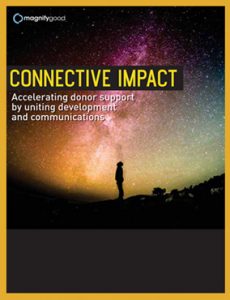In our work with nonprofits, we see deeply committed people working hard to support their organization’s mission.
Donor development works to build relationships. They match donors with opportunities that make a difference in the world.
Communications has a vision for branding and digital communications. And how to use them to take advantage of the technology revolution to better connect with people. But they may not connect those activities directly to how the organization can raise more money. That’s a problem.
Both teams are focused on what they do best. But are they united in achieving the mission? Is everyone going in the same direction on the way to the same goal?
DEVELOPING SHARED GOALS TOGETHER
Shared goals make it a lot easier to do strategic planning as a group instead of planning in isolation. Or by department. Why is a unified strategic plan so important?
Because planning in silos keeps you from raising more money to support your mission. It’s really that simple. When a group is in sync, the work they do reinforces each function’s and each person’s insight, talent, and work. They can see how parts of your strategy resonate with their peers. And as a result, they’re more likely to reconsider them in a positive light.
You can think through exactly where you want to go with the help of an acronym called SMART. A SMART goal is:
- Specific
That is, it’s well defined. It’s clear to anyone who has a basic knowledge of the project. - Measurable
It’s a goal that is obtainable. One that recognizes how far away you are from completing it.
It defines when you have achieved your goal. - Agreed Upon
There is agreement between executive directors, development and communications of what the goal should be. - Realistic
The goal can be reached within the available resources, knowledge, and time. - Time-Based
You have enough time to achieve the goal. But not too much time, which might affect project performance.
Here are some examples of how SMART goals work:
- Let’s say your goal revolves around gaining greater recognition for donors. Development could be assigned the role of strengthening relationships. Communication could focus its efforts on gaining media attention.
- What if your goal is to increase the knowledge of the organization’s key campaigns? Then development might focus on sustaining campaigns. Communications’ role could be to increase the depth of knowledge about your organization.
- Want to reduce the time it takes to produce materials? Development could focus on reducing lead-time. Communications could take on the challenge to produce things more efficiently.
I hope you find this helpful. You’ll find many more hands-on ideas you can use unify your organization by downloading: Connective Impact: Accelerating donor support by uniting development and communications.
As a social sector communications agency, MagnifyGood specializes in elevating the marketing, PR, branding, advertising, and social media of nonprofits, foundations, and other mission-driven organizations. Looking to enhance your donor engagement, create compelling impact stories, establish a brand that aligns with your mission, or explore innovative strategies to connect with your community? Contact us here. Let’s magnify good together.




